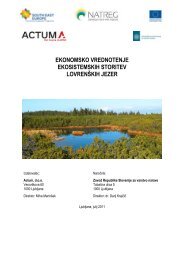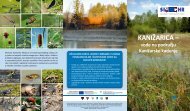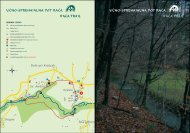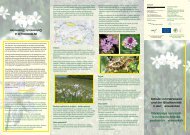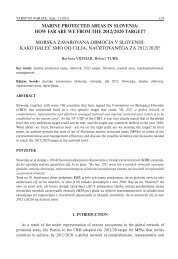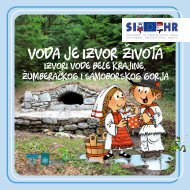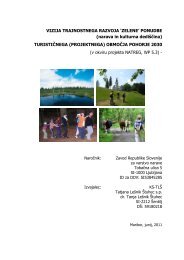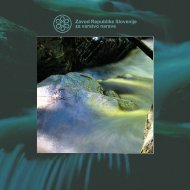Monitoring MPA visitor uses handbook
Monitoring MPA visitor uses handbook
Monitoring MPA visitor uses handbook
- No tags were found...
You also want an ePaper? Increase the reach of your titles
YUMPU automatically turns print PDFs into web optimized ePapers that Google loves.
according to the control effort made as shown below:Regulatory compliance indicator = Number of offencesrecorded / (Number of patrols done * Number of surveillanceemployees).5.9 Emerging activities and practicesindicator5.9.1 RelevanceThis indicator aims to monitor changes in practices andactivities carried out in the <strong>MPA</strong> to measure the impactsof new activities (canoeing, kite-surfing, whale-watching,stand-up paddling, etc.) or new practices (long-termmooring, naturism, high-speed water sports, etc.) assoon as possible.5.9.2 Relevant <strong>MPA</strong> types<strong>MPA</strong>Continentor island<strong>MPA</strong>Continentor island<strong>MPA</strong>5.9.3 Framework protocolContinentor island<strong>MPA</strong>Data collected : Number, type and location of new activitiesor practices observed in the <strong>MPA</strong>.Collection method : Observation and recording of newactivities or practices on datasheets or a book of emergingpractices, filled in during patrols and informationrounds.Location : The entire <strong>MPA</strong>.Frequency : Ongoing data collection, during the patrols(variable frequency depending on the management entities).Time and cost : Short collection time, combined withpatrols. The time it takes to capture and archive datawill vary with the extent of any new practices or activitiesobserved; however, one half-day of work per yearshould be sufficient.Archiving : Use an Excel©-type spreadsheet with asimple structure to keep data entry time to a minimum.When a new identified practice or activity becomes significant(in space, time or number) or creates issues forthe managers, it should be studied based on the samecriteria and indicators as the "regular" <strong>uses</strong>. These new<strong>uses</strong> will then be integrated into the typologies used forcounts done on land and/or at sea and user profiles,practices and perceptions will be obtained using the surveymethods.5.10 Weather and sea conditionsindicator5.10.1 RelevanceThis indicator provides quantitative data about daily,seasonal and annual weather conditions, i.e. wind forceand direction, cloud cover and rainfall, temperature, andstate of the sea.<strong>Monitoring</strong> this indicator provides explanations of suddenchanges in <strong>visitor</strong> numbers and use. Weather conditionsdirectly impact :• the decision to travel to the <strong>MPA</strong> by sea,• the mooring area chosen by boaters and the searchfor a sheltered beach for swimmers,• the choice of leisure activities carried out.5.10.2 Relevant <strong>MPA</strong> types<strong>MPA</strong>Continentor island<strong>MPA</strong>Continentor island<strong>MPA</strong>Continentor island<strong>MPA</strong>5.9.4 AdviceThe quantification and identification of new practicesor activities in the <strong>MPA</strong> will greatly depend on the surveillanceeffort made. The number of patrols, the patrolroutes and the number of employees assigned topatrols will determine the degree to which activities arerecorded. TABLE OF CONTENTS 35 COLLECTION VISITOR USE OBSERVATION AND MONITORING IN MEDITERRANEAN MARINE PROTECTED AREAS



